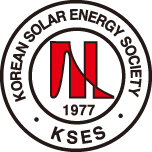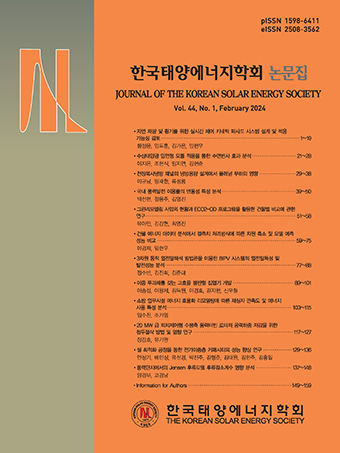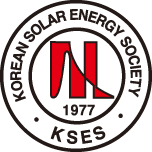Research Article
Abstract
References
Information
Attia, S., Eleftheriou, P., Xeni, F., Morlot, R., Ménézo, C., Kostopoulos, V., Betsi, M., Kalaitzoglou, I., Pagliano, L., Cellura, M., Almeida M., Ferreira, M., Tudor Baracu, Viorel Badescu, Ruxandra Crutescu, Juan MariaHidalgo-Betanzos, Overview and Future Challenges of Nearly Zero Energy Buildings (nZEB) Design in Southern Europe. Energy and Buildings, Vol. 155, pp. 439-458, 2017.
10.1016/j.enbuild.2017.09.043Song, S., Koo, B., and Lim, J., Comparison of Annual Heating and Cooling Energy Demands of Internally and Externally Insulated Apartment Buildings Considering the Thermal Bridging Effect and the Heat Capacity Difference Using Monthly Calculation Method of ISO 13790. Journal of the Architectural Institute of Korea, Vol. 26, No. 7, pp. 321-332, 2010.
- Publisher :Korean Solar Energy Society
- Publisher(Ko) :한국태양에너지학회
- Journal Title :Journal of the Korean Solar Energy Society
- Journal Title(Ko) :한국태양에너지학회 논문집
- Volume : 39
- No :5
- Pages :11-28
- Received Date : 2019-10-03
- Revised Date : 2019-10-21
- Accepted Date : 2019-10-22
- DOI :https://doi.org/10.7836/kses.2019.39.5.011



 Journal of the Korean Solar Energy Society
Journal of the Korean Solar Energy Society








